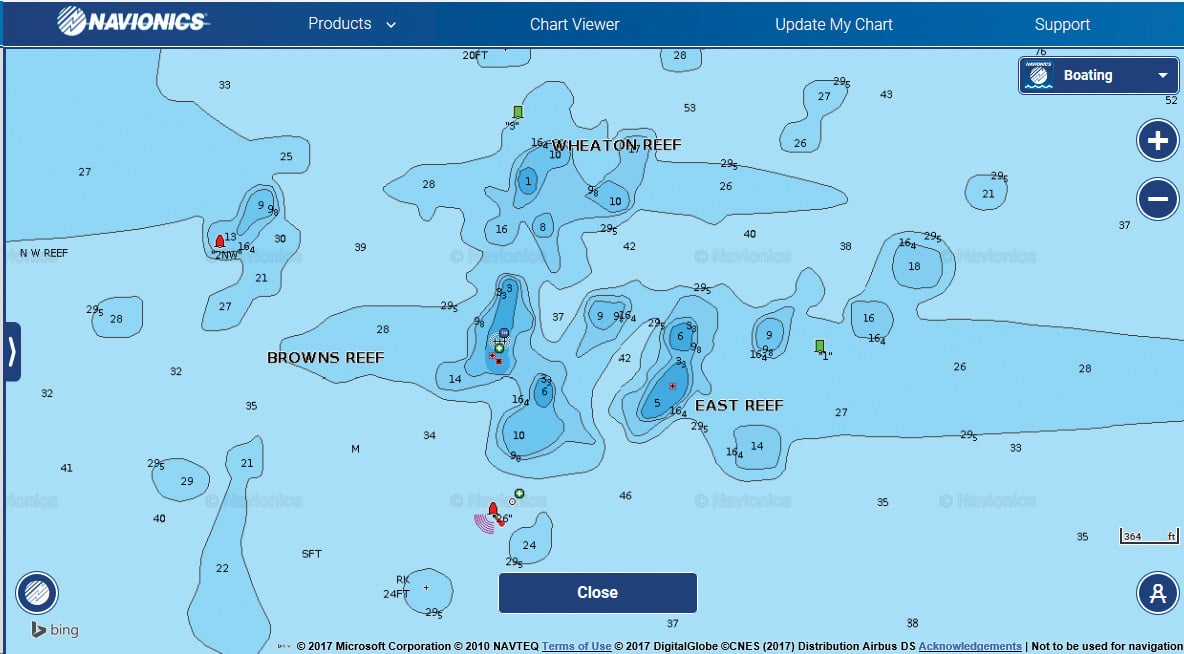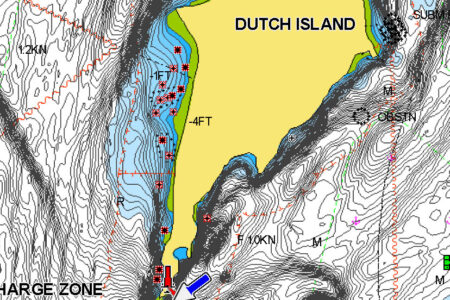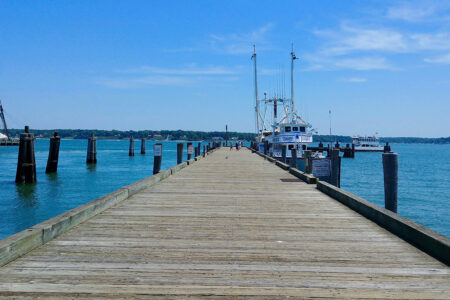
Browns Reef, as it’s referred to by Branford bottom fishing regulars, is actually a cluster of individual structures, each with its own name and navigational aid, but often collectively known as “Browns.” The northernmost rock formation in the group is Wheaton Reef, which rests a half-mile southwest of Outer Island (of the Thimble Islands) at Can 3, and is a scant foot below the surface. Southeast of Wheaton is East Reef at Can 1. Southwest of Wheaton is Northwest Reef at Nun 2NW. And due south of Wheaton is Browns Reef proper, marked by R 26 Bell, flashing red 4 seconds. The entire complex is large, running about one-half mile north/south and about three-quarters mile east/west.
These reefs are gangbusters for several species, but they’re not a place for the faint of heart or those with novice navigational skills. A reliable GPS/chartplotter/depthfinder is a valuable tool here. But just a depthfinder is insufficient unless you have one finger on a chart because several structures approach the surface suddenly at mid and low tides. Extreme caution is needed until you learn the area. But it’s well worth the effort, because the fishing can be very good.
In line roughly between Browns and Wheaton buoys rests a massive rock that shows at low water. Approaching from the south, blackfish pros idle their way into the southeast and east sides of the rock to set up on boney structure in depths between 12 and 18 feet. The waters immediately surrounding East Reef are similarly productive for blackfish, although this reef can destroy a propeller at low water, too. Among these rugged, mid-depth tog hotspots are deeper gaps and perimeter waters of 25 to 35 feet deep. Any of these areas near structure but with a flat bottom are excellent places to anchor for porgy action.
When the tide pushes hard through these reefs, the bottom fish go off the bite. The current is too much for them to feed efficiently, and the water becomes turbid from stirred up silt. Your best bet for porgy, blackfish and sea bass is within about an hour on each side of slack water. Chumming is effective during slow tide periods because it’s so shallow here, but be sure to throw your chum off the bow so it settles back by your hooks.
A small, “secret” reef, not labeled on some charts, and rarely fished, rests to the south and southeast of Browns bell. This is a safe reef with a high spot of about 25 to 28 feet. To the east of the reef is a precipitous drop-off to about 80 feet, but to the west, less of a deep drop with depths to 45 to 50 feet. This reef doesn’t seem to produce blackfish as well as the inner shallower spots; however, sometimes this outer reef is a hotspot for bluefish and schoolie bass, especially in the fall. Slowly motor around the area until you get a sense of the amazing structure below, and then run up-tide to about 50 feet deep. Immediately stop the motor, and drop a 4- to 6-ounce diamond jig to the bottom. As soon as it hits structure, quickly take eight to 10 rapid turns up and repeat until you’ve passed the crest.
This reef runs about 75 yards north/south, so if you don’t hook up on the first few drifts, start working your way to different north or south starting spots in order to cover the entire reef. Oddly, this place can be thick with predators along the bottom but seldom has birds working on top. It often holds bluefish through October and schoolie bass until almost Thanksgiving. If you’re making a run between Guilford and Branford, always stop by the south side of Browns bell with a diamond jig. Sooner or later, you’ll hit a jackpot.



